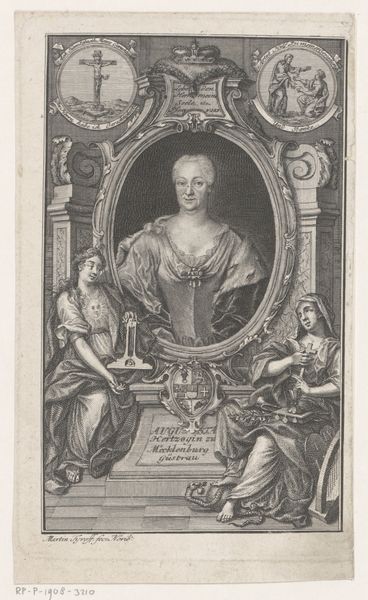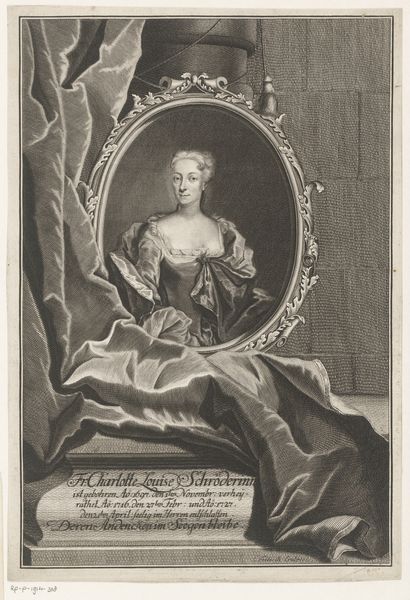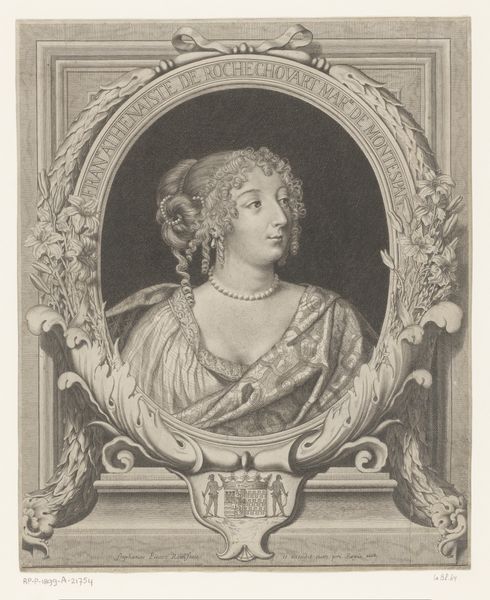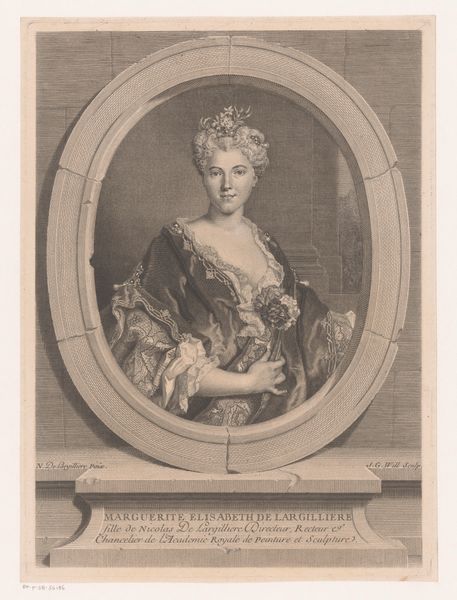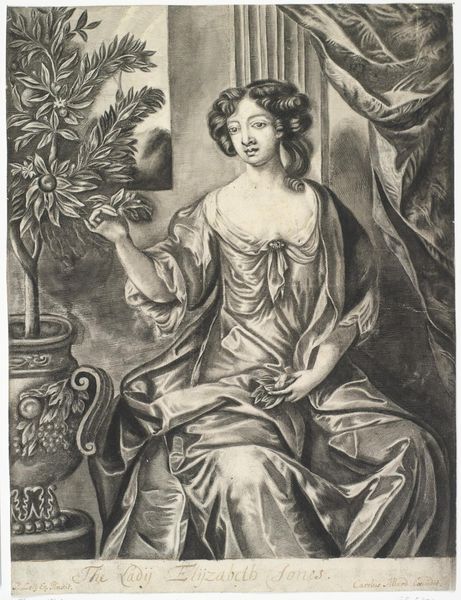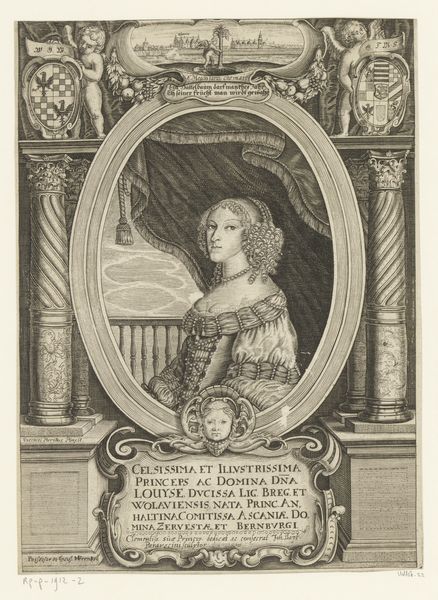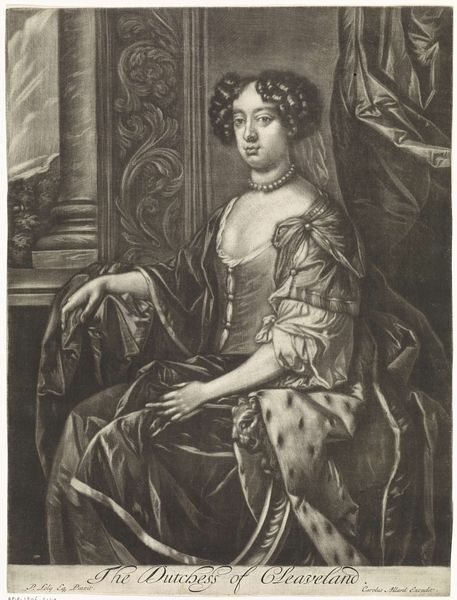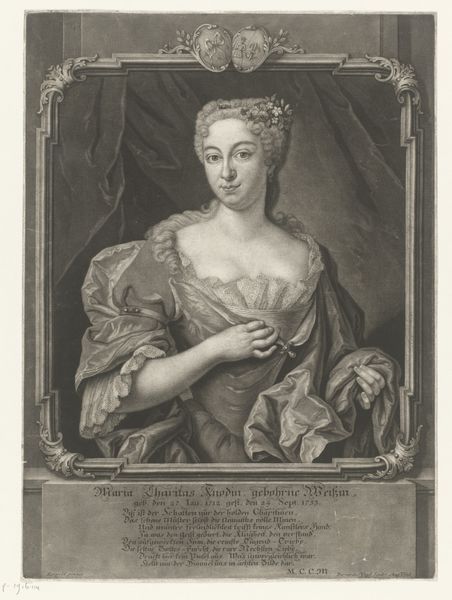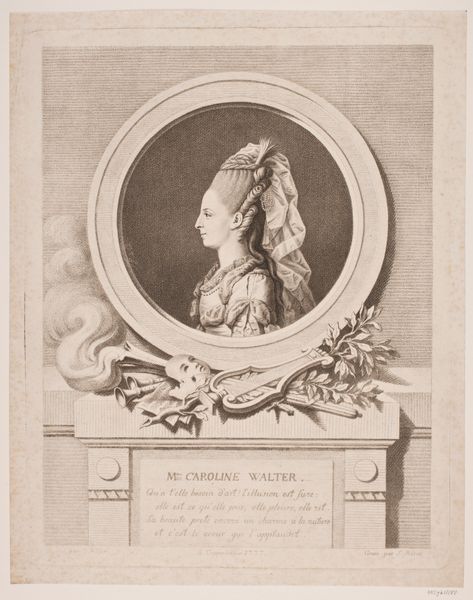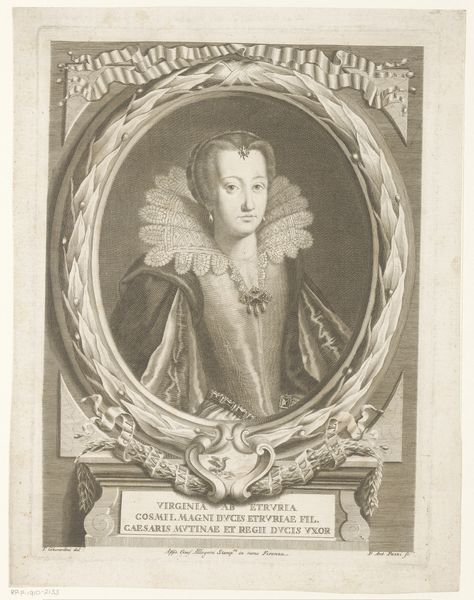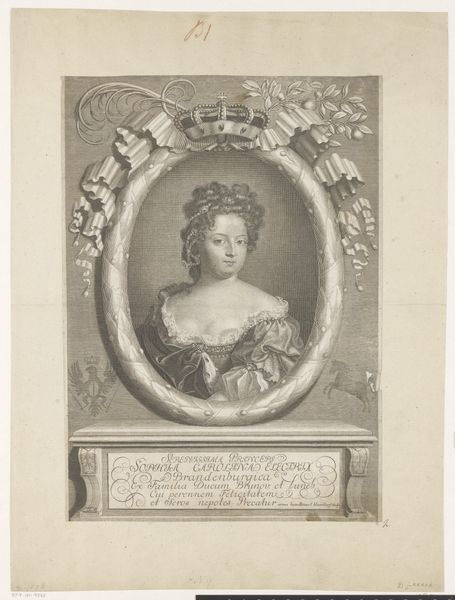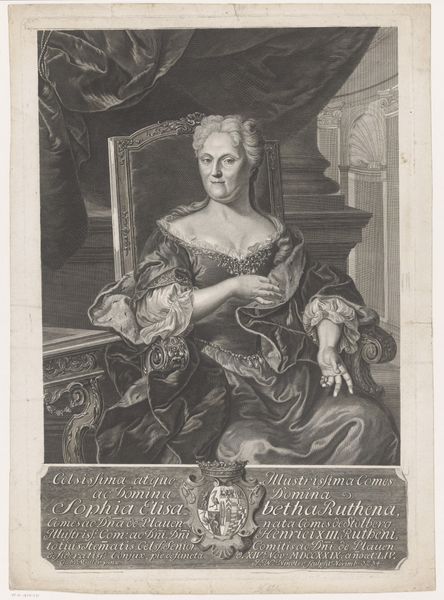
drawing, print, paper, engraving
#
portrait
#
drawing
#
baroque
# print
#
paper
#
engraving
Dimensions: 453 × 340 mm (image); 457 × 341 mm (sheet)
Copyright: Public Domain
Curator: At the Art Institute of Chicago, we find Johann Georg Wille's 1743 engraving, "Portrait of Elizabeth de Gouy." Editor: It's stunning! The level of detail in the fabric is incredible, giving a real sense of texture. And yet, there is an air of detachment. I wonder what stories this image obscures about her real experience? Curator: Wille's skill in rendering materials certainly draws the eye. The way he translates fabric and skin tone using only engraved lines is quite masterful. But beyond just an aesthetic triumph, it speaks to the highly skilled labor that goes into printmaking and its circulation. Editor: True, the social position granted to wealthy women allowed them time for leisure pursuits but there is labor involved in these depictions that need recognition as well. How would an intersectional lens alter this representation, understanding how class and social position were affected by broader structures, maybe patriarchal dominance in that historical moment. Curator: Exactly! Engraving as a profession existed within specific societal structures, too. It relied on workshops, apprentices, and a market for distribution. Elizabeth de Gouy would have had power as a patron. Who in turn worked on this image for weeks in isolation, who prepared the paper and ink? Editor: These images play a critical role in power dynamics. Looking at the formal qualities – her gaze averted, the ornate frame – the artist also shows that women did not have power for themselves in that particular moment in time, but only relative power by association with male relatives. How does this intersect? Curator: By focusing on the material – the paper, ink, the engraving tools, the social interactions of artist, patron, assistants, and even the viewing public we gain access to understand what existed materially and how they relate through commerce and production! Editor: What a rich and insightful exchange! Thanks for unveiling some truths around "Portrait of Elizabeth de Gouy". Curator: Thank you! Understanding artwork and process more makes it more relatable.
Comments
No comments
Be the first to comment and join the conversation on the ultimate creative platform.
